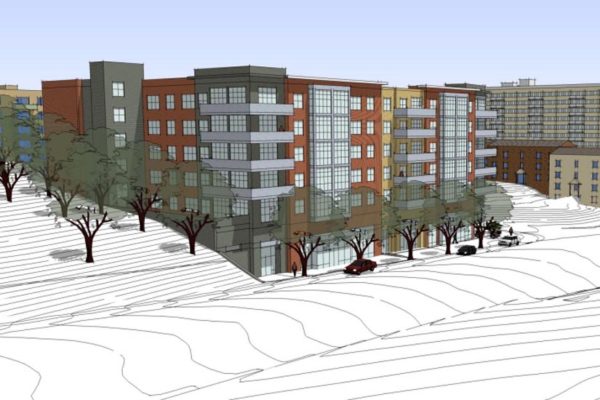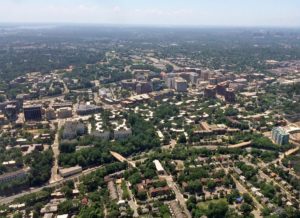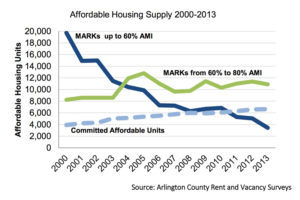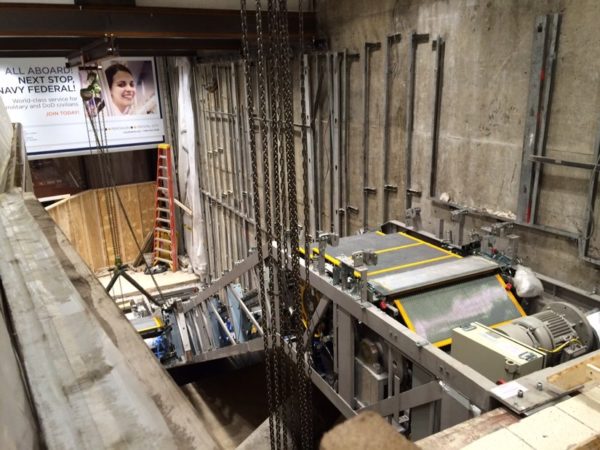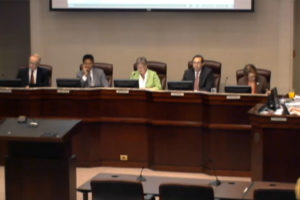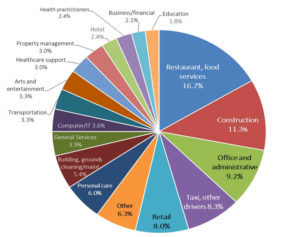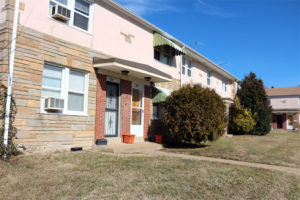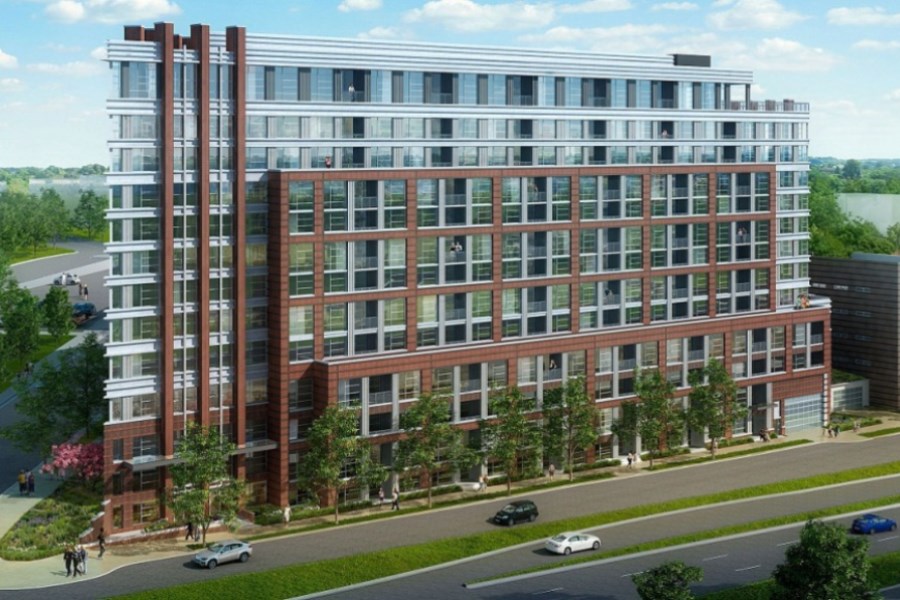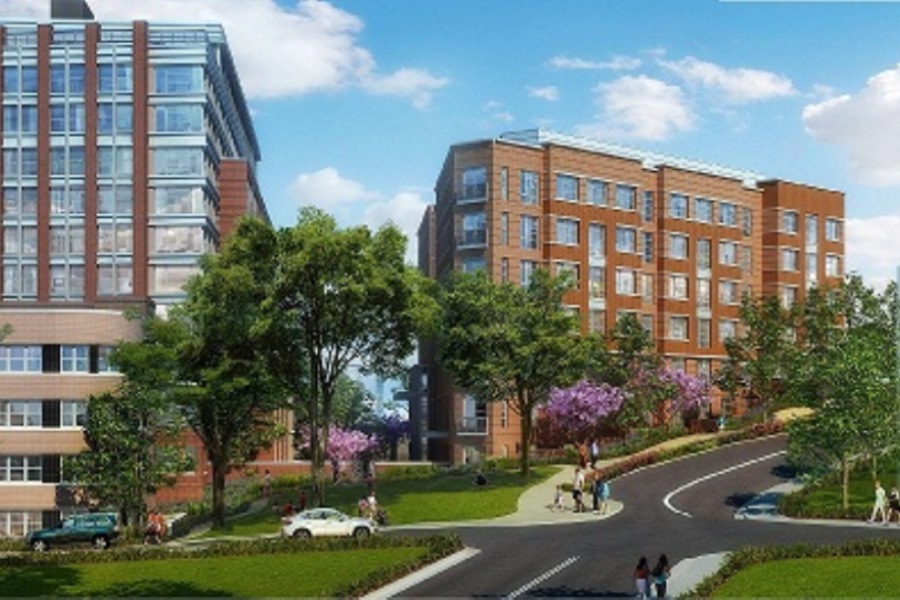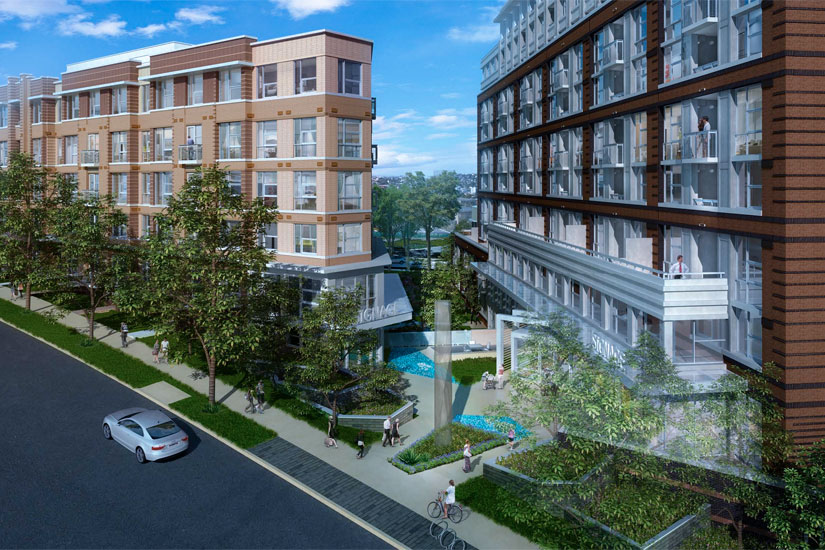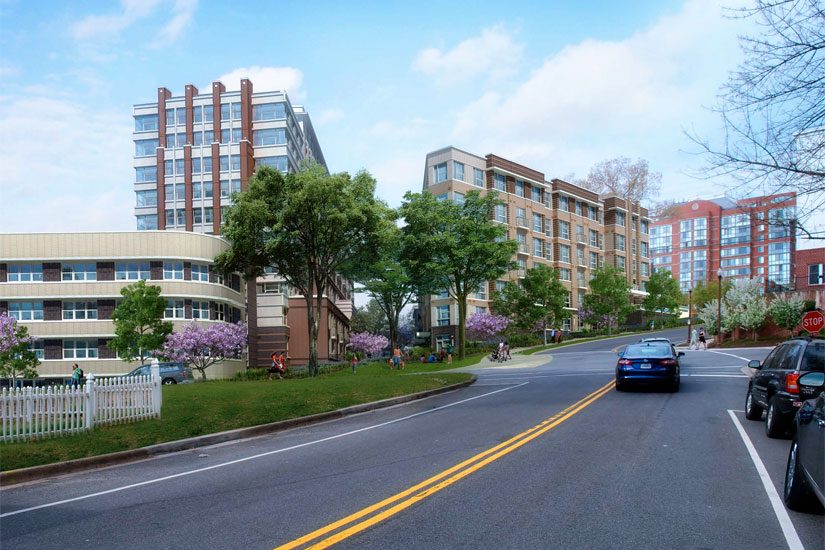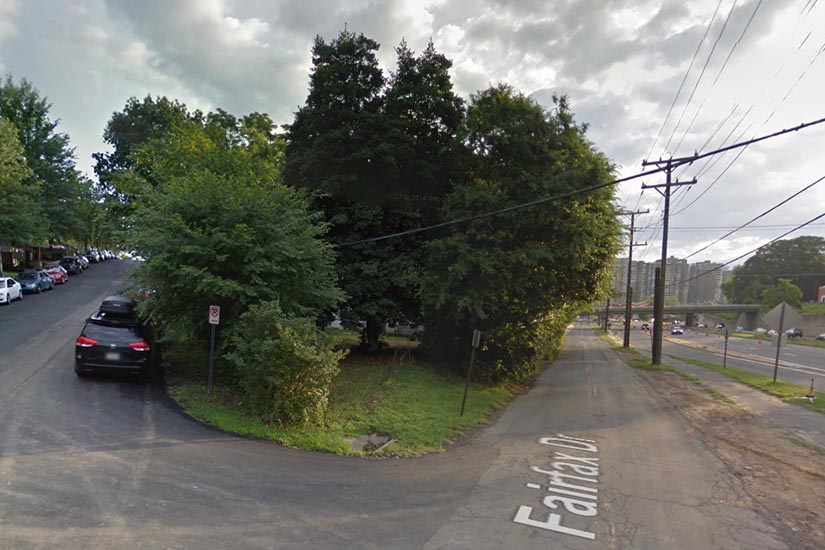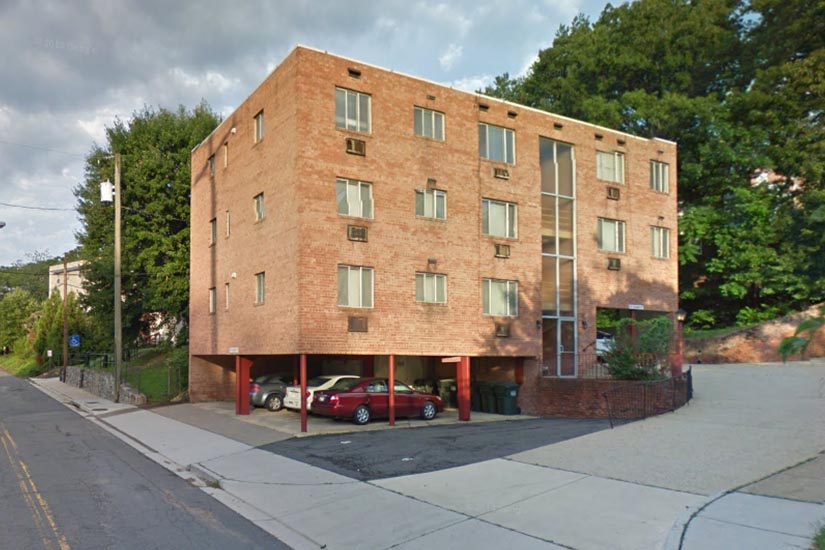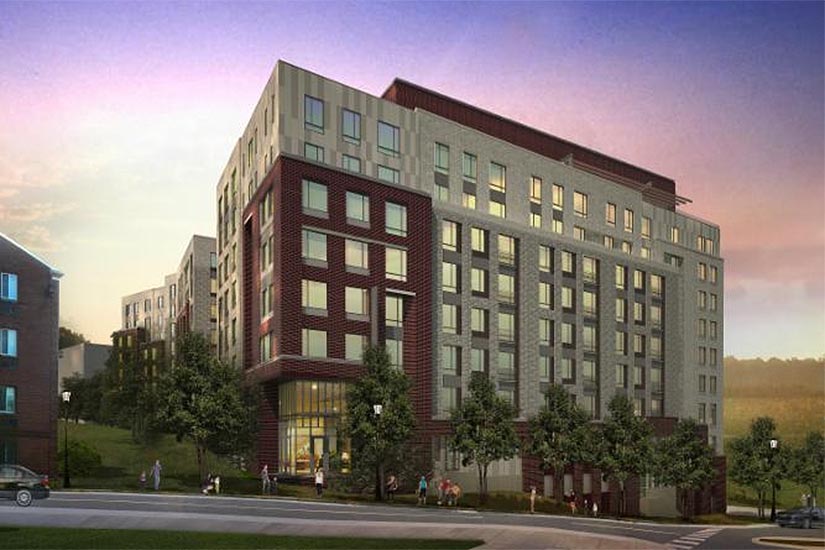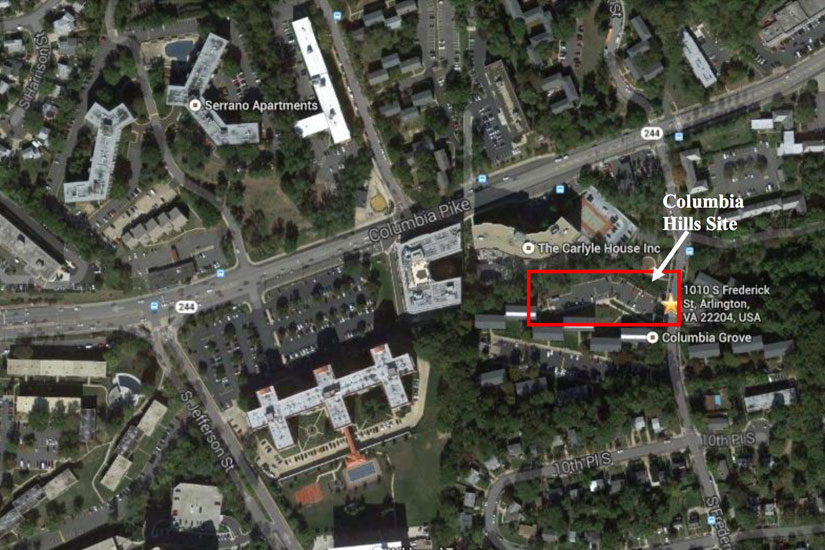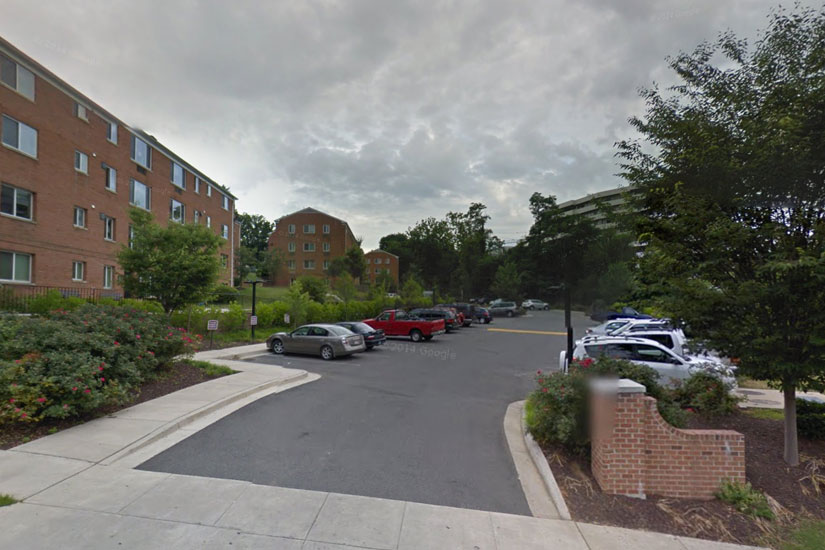
A newly-formed citizens group is raising questions about the Affordable Housing Master Plan, the County’s plan to address the need for more affordable housing.
The Coalition of Arlingtonians for Responsible Development (CARD), which currently has around 70 members, is concerned with the geographic distribution of affordable housing units and the effect affordable housing has on Arlington Public Schools.
The County Board has set public hearings on the housing plan before the Board and the Planning Commission in September to allow for more public comment. The plan, as proposed, calls for the creation of 15,800 additional affordable housing units by 2040, bringing the total to 22,800 units or 17.7 percent of the total housing stock in Arlington.
For CARD, the question is not the amount of affordable housing, but where it is placed in Arlington. There are large discrepancies in where affordable housing units are located, leading to socioeconomic segregation, said Joye Murphy, a founding member of CARD.
Murphy points to neighborhoods along Columbia Pike — particularly the western end of the Pike — that feed into Randolph Elementary School. In some neighborhoods along the Pike, the county set of a target of having 15 percent of their housing available as affordable housing. However, the neighborhoods exceeded that target and have about 38 percent of its housing affordable, Murphy said.
At the same time, she said, some North Arlington neighborhoods have failed to reach their targets.
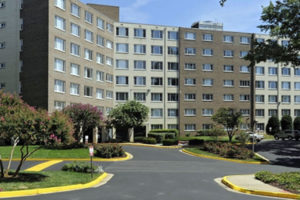 “What we’ve seen is a disproportionate percent of affordable housing along specific areas of Arlington,” Murphy said.
“What we’ve seen is a disproportionate percent of affordable housing along specific areas of Arlington,” Murphy said.
One of CARD’s aims is to have affordable housing across the county, not just in specific sectors. By spreading affordable housing, there will be more diversity in Arlington’s neighborhoods, which will benefit all Arlington residents, said Maura McMahon, another founding member of CARD.
“CARD’s goals are for responsible development in Arlington that fosters socioeconomically diverse neighborhoods and schools so that all Arlingtonians can benefit from what Arlington has to offer: top schools, efficient transportation systems, quality recreational facilities and parks, etc.,” McMahon said. “We believe every individual and every child should be afforded an equal opportunity to achieve his/her potential.”
The current targets for the amount of affordable housing units that should exist in each neighborhood are not referenced in the new plan, Murphy said. It only lists distributing housing units throughout the county as one of its goals.
The targets allowed for accountability, said Dedra Curteman, a CARD founding member.
“The primary fault with the master plan as written is it doesn’t call for targets for geographic distribution,” Curteman said.
Without the targets for each neighborhood, affordable housing developers could theoretically place most of the new affordable housing units in specific areas of the county instead of throughout Arlington.
“I worry that the targets were deleted because they shot past the targets in many areas,” Curteman said.

CARD wants County Board members to include tools and specifics in the housing plan to ensure geographic distribution. The group plans to send a letter with their recommendations to the County in the next week, Murphy said.
The county is replacing the targets with three different ways to address affordable housing, said County Board Chair Mary Hynes.
“The plan really has three buckets that the Board would be using to achieve affordable housing,” Hynes said.
The first is preserving existing units, the second is looking at bringing affordable housing to transit corridors and the third is to look at areas with many single-family homes to see where additional housing units could be added. Hynes said that CARD is right in saying that the county does not yet have the tools needed for the second and third buckets, but after the plan is adopted she hopes the county will work on developing these tools.
The targets also did not work as the county did not have the tools to bring affordable housing to each area according to the targets, Hynes added. A lack of available land and high costs could make building affordable housing in certain parts of the county particularly difficult.
CARD members say the lack of geographic distribution affects the Arlington Public Schools, as research has shown that having a large amount of children that need reduced or free lunches influences test and achievement scores.
“Housing policy is education policy,” Murphy said.
(more…)



